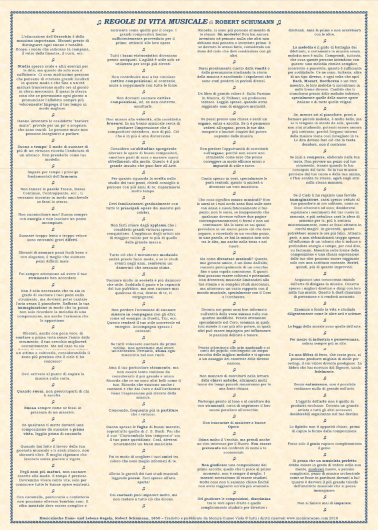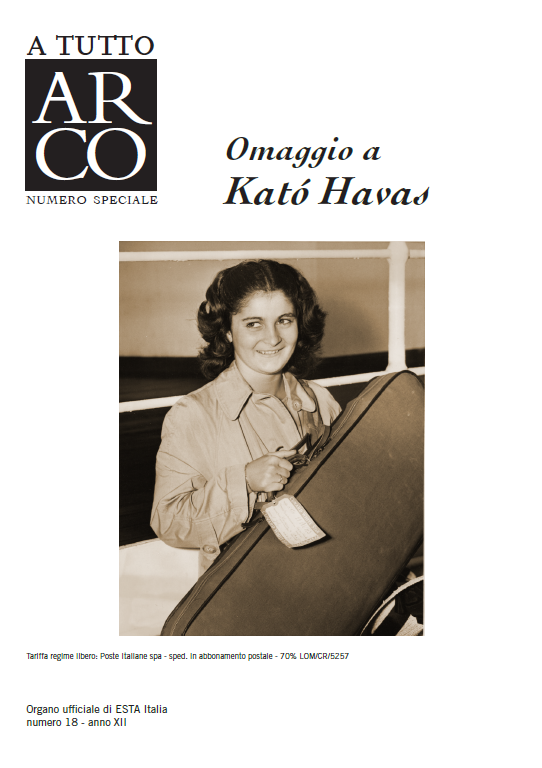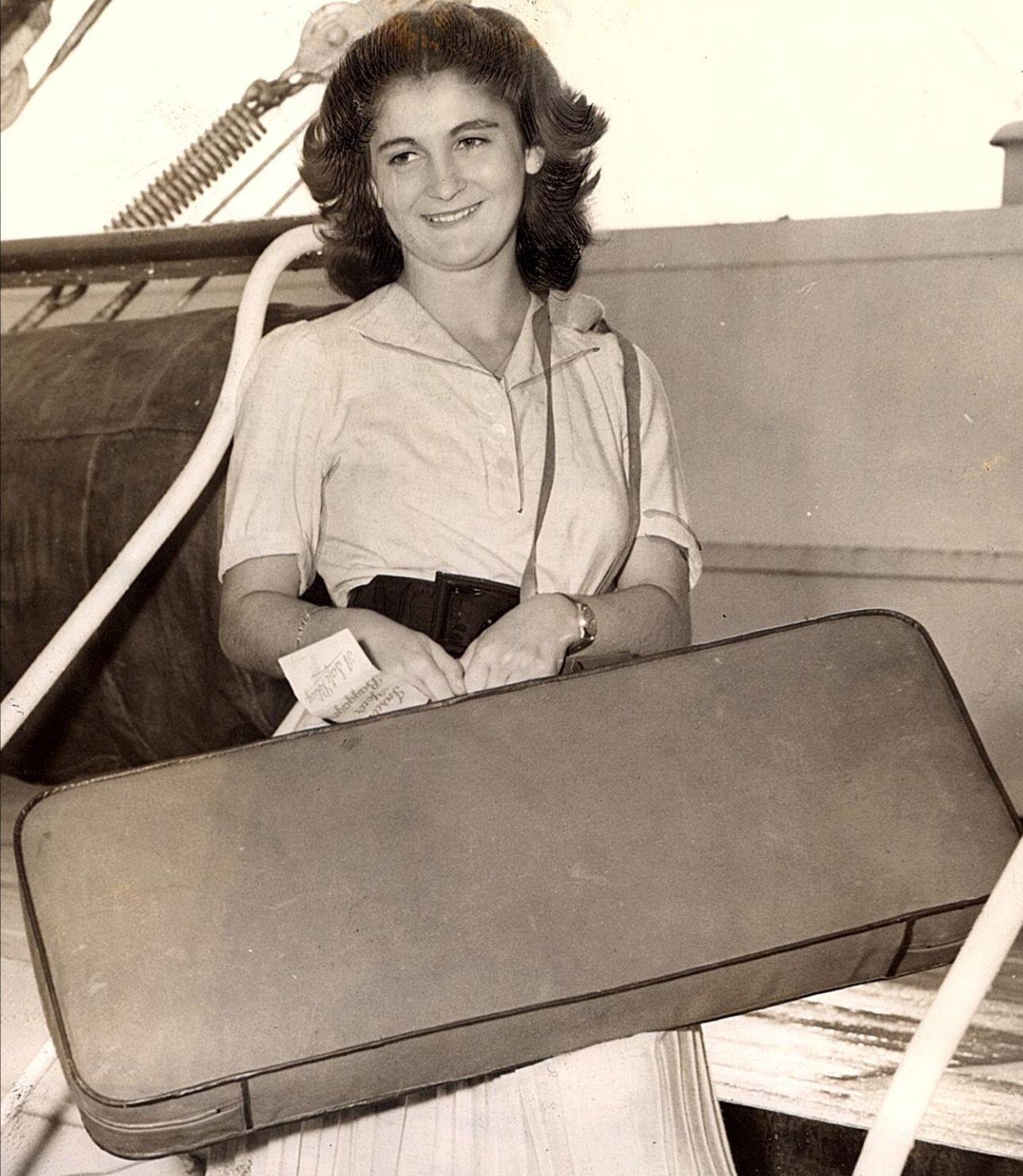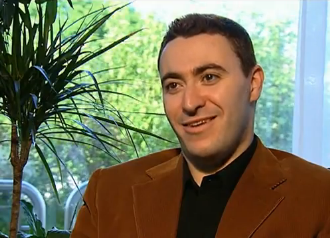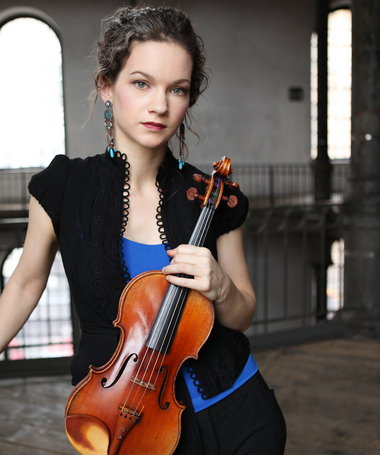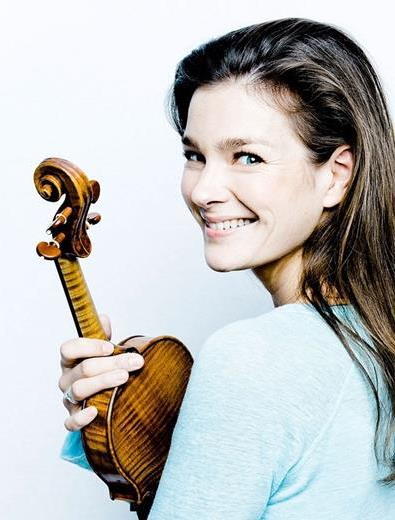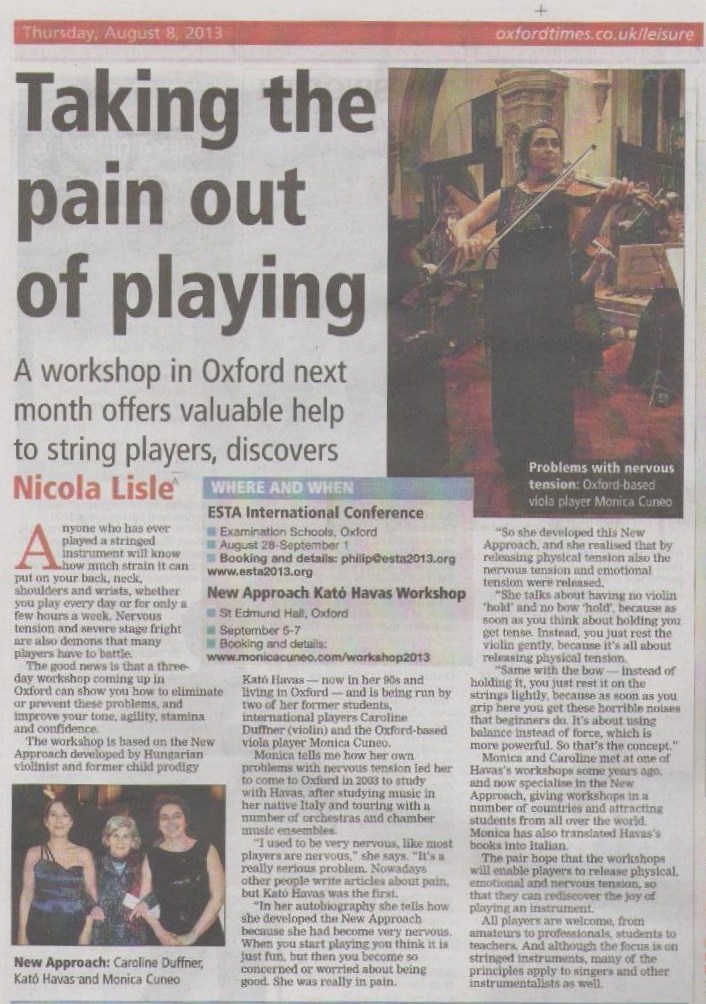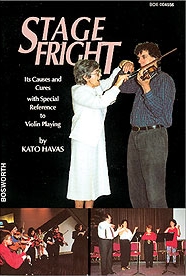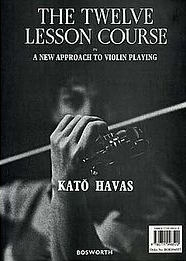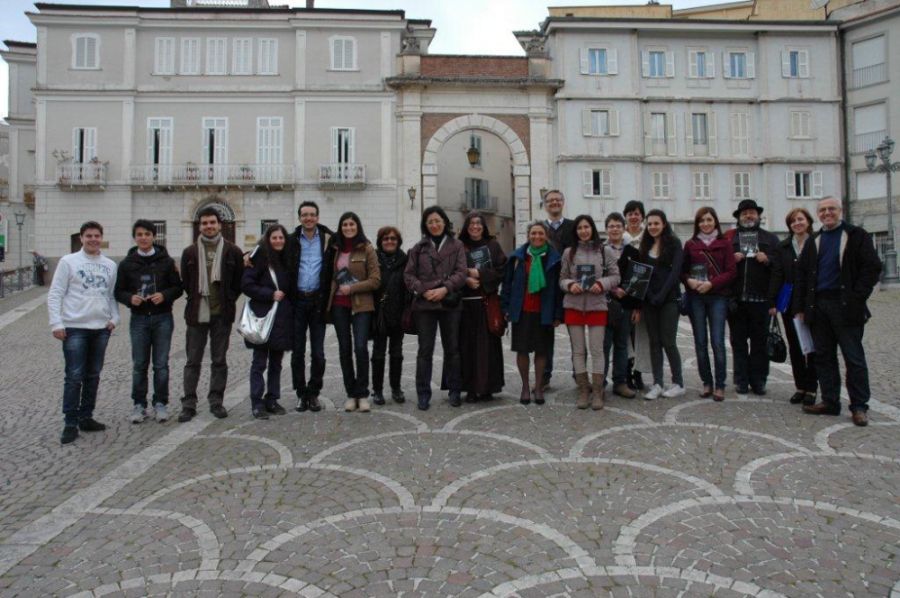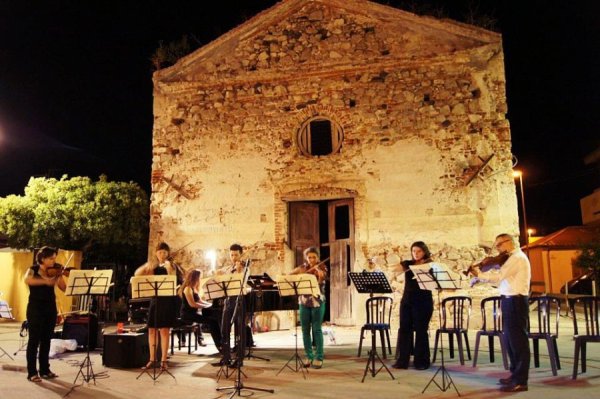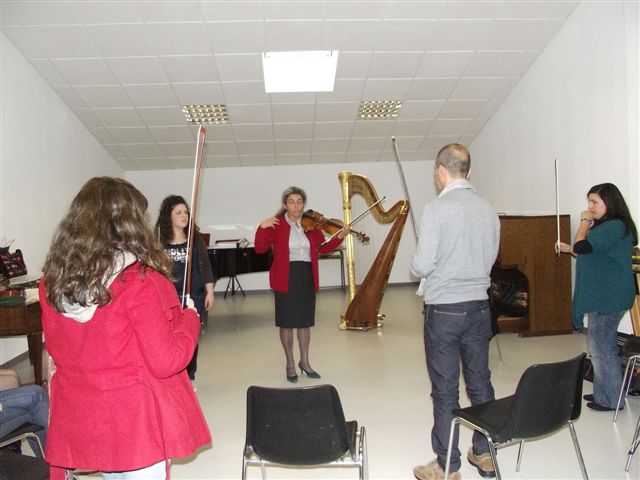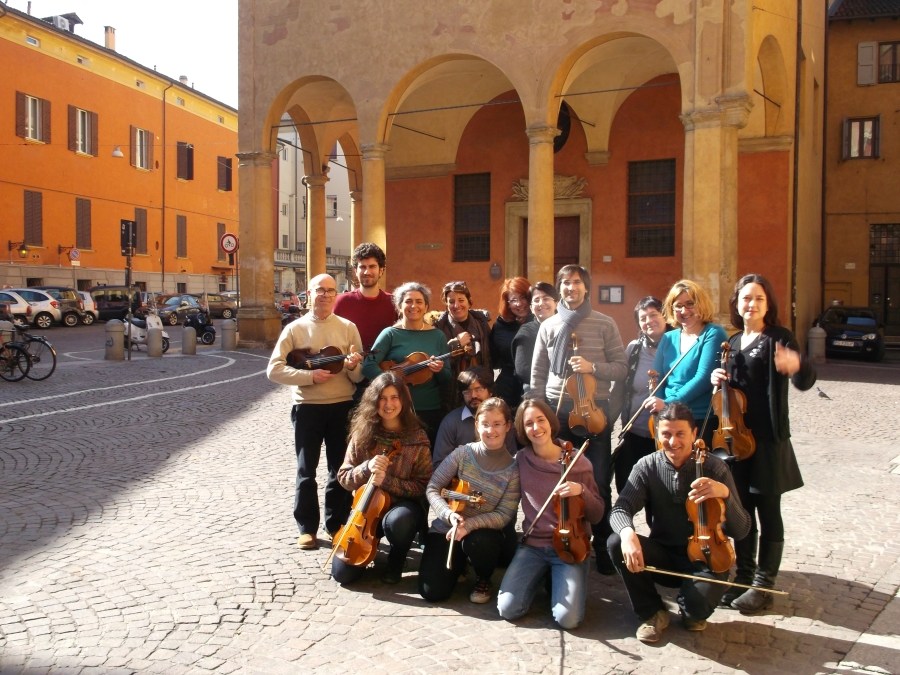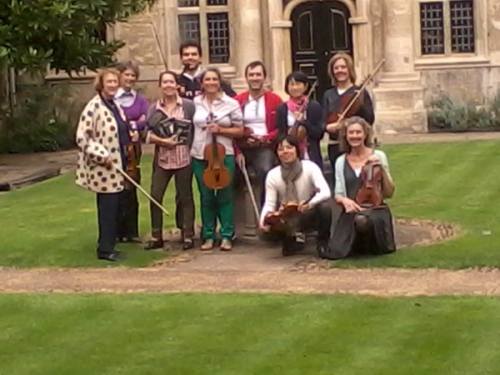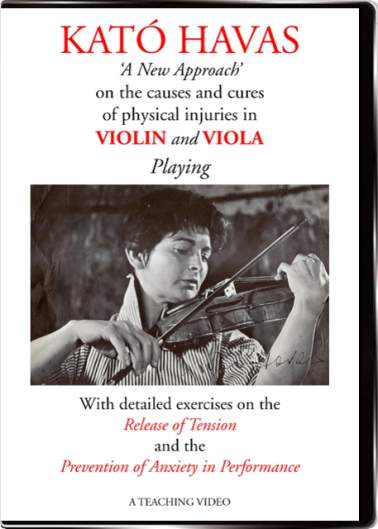Kato
Havas and the New
Approach to string playing
How to eliminate
tendonitis and stage fright, improve your tone and play with more ease
Kato
Havas is a violin and viola teacher who developed a way to teach and
play to prevent and eliminate physical injuries (tendonitis,
tenosynovitis, bursitis etc.) and nerves, stage fright, related to
string
playing.
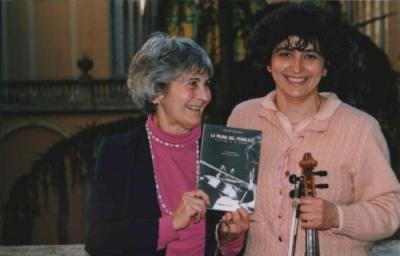 Kato Havas at the presentation of the book Stage Fright in Italian translated by Monica Cuneo, with her in the photo
Kato Havas at the presentation of the book Stage Fright in Italian translated by Monica Cuneo, with her in the photoThis was first illustrated in the book "A New
Approach to violin playing", published in 1961. Despite
the title, the New Approach applies to all string playing and many of its concepts can be applied
also to all other instruments.
Following
the success of the first book, she also wrote "The twelve
lesson course" (1964) and "Stage fright
- Its causes and cures"
(1973) and in 1991 she published a teaching video - DVD which is great because you can actually see
what's written in the books and understand it better. This DVD was very difficult to find, now it's here). Her books were praised by Yehudi Menuhin.
The books and other teaching material by Kató Havas have been published over many years, since 1961 and they are still selling! Here below are the publication dates in chronological order:
- A new approach to violin playing, 1961;
- The twelve-lesson course, 1964;
- Stage fright - Causes and cures, 1973;
- the teaching DVD, 1989;
- videos of Kató Havas workshop, 2008.
By studying them in chronological order you'll notice some slight differences. As Kató Havas herself says in Stage fright, these changes in the terms used and in the indications, based on teaching experience, became necessary in order to simplify more and more, eliminate those terms, exercises, movements that cause physical and mental tensions.
Therefore each book/video is a more in-depth explanation of the previous ones, so it's highly advisable to read in this website the pages about the various books, then read all the books, watch the teaching DVD and the workshop videos available with subtitles.
"Miss Havas is original in her approach to the violin [& viola] playing because she insists that technique must be reducible to basic motions involving more than the fingertips"
Sir Yehudi Menuhin
Preface to "A New Approach to violin playing"
“Dear Kató Havas, I would like… to congratulate you on your book Stage Fright... It is the most realistic and practical approach imaginable… it should be worth its weight in gold to every student and many a performer.”
Sir Yehudi Menuhin
Preface to "Stage fright"
Back then, those books
were ahead of their time, nobody spoke about
physical injuries caused by playing an instrument. Nowadays everybody
is well aware of this issue, there are even clinics for musicians'
injuries.
Buy New Approach books
Buy the teaching video - DVD
Kato Havas: short biography
Kato Havas was born in Hungary and was a child prodigy on the violin. She received the virtuoso training at the Budapest Academy of Music, gave concerts since the age of seven and at 17 made her debut at the Carnegie Hall. Soon later she got married and started a family, retiring from the concert world. During this time she was able to think about playing and its problems, remembering the Hungarian gypsy players she had met as a kid.
Kato Havas, having been a child prodigy on the violin, professional player, successful soloist, knows all the aspects of performing, she herself suffered from stage fright. Being Hungarian, she had seen and heard Hungarian gypsy violin players, with their ease of playing, so she developed this New Approach to playing that eliminates physical tension. By teaching it, she realised that it also eliminates stage fright.
In
the following two videos, shot at an ESTA Italy (European String Teachers' Association) in Cremona, presided by the great viola player Bruno Giuranna, you can see Kato Havas talking about her
experience as a child
prodigy in Hungary and with gypsy violin players, how she learned to
play. In these videos Kato Havas speaks in English and I translate into Italian.
In the first video she
tells of when she
started as a little girl having fun; her training at
the
Budapest academy at the time when Bartok, Kodaly, Donhany, Hubay were
there; her career, her debut in Carnegie Hall, her problems, how she
remembered the gypsies she had met, the influence they had on her.
If you have any problems watching these videos check this YouTube page
| |
This second video is about the time Kato Havas stopped playing and how she developed the New Approach, movement by movement, by remembering the gypsies, their left hand, their love of playing and giving the music, that they had no fear. What's the secret of music making.
The cause of bad sound and a lot of other problems too
The
horrible sound, or rather noise, that "everybody knows" beginners have
to suffer, is caused by tensions in the body, by the right hand
gripping
the bow and pressing on the strings, by the left hand clamping the
instrument between shoulder and head for fear of dropping it and
pressing the fingers down on the
fingerboard.
All this not only causes
physical tension that produces horrible noises
(and not only at
the beginning), bad
intonation, inability to play fast and to play double stops and
chords, it
also causes more or less pain
in the back, neck, arms, thumbs and causes nerves,
stage fright, the fear of playing in front of an audience. Pain is
nothing else than a message your body is sending
you, it's telling you that you are doing something wrong, you are
mistreating it.
In more serious cases it causes
physical injuries
(tendonitis) following which some players have to completely give up
playing, after maybe undergoing surgical operations.
It is possible to have a beautiful tone from the beginning
And
advanced players can also have a better quality tone. A
beautiful tone is a rich and warm tone, not squeaky, and this depends
both on intonation and the way the tone is produced by the bow friction
(not pressure) on the strings and by the softness of your left hand,
that remains supple and able to play fast, play chords, so
that
the player can focus on expressing himself or herself rather than on
the technical problems.
What is really
important to improve one's playing and
achieve results
quickly is the ability to control
every single movement of our body and to do this it's
necessary to focus our
mind on one thing at a time, one movement at a time and
then, once we can control individual movements, put them together.
So, what is the New Approach?
As Kato Havas explains,
"...when I began to teach, I realized that a whole new
approach was necessary - an approach which eliminates physical disturbances and makes it
possible for the mind to have full reign over the music. ... This approach is based on the idea of balance, not of strength."
See "A New
Approach to violin playing, pag.2.
It is about using the natural balances that are found in the body's movements.
The New Approach developed by Kato
Havas is all about playing with
ease, without worries,
so
that we are free to give the music to our listeners, communicating
music instead of trying to prove how good we are (or being worried
thinking we are not good enough), playing doing the spontaneous, natural movements, of the body.
This starts
with eliminating all physical tensions we have when playing,
which cause pain, physical
injuries, harsh sound and insecurity and nerves,
a serious problem for most players. It's not enough to say
"practice
more", "play
more in public" (but how, if you cannot do it?), etc. A lot of teachers
are good at teaching the "interpretation" of a piece, what about the
emotional side of playing? In our drug-oriented society
there is the tendency to solve every problem with a specific drug, and
this more and more often applies to musicians and their stage fright.
In her three books on the New Approach, Kato Havas explains it very well. In Stage fright you can read that we need to address the physical, mental and social aspects (causes) of stage fright, in that order. However, after you've already studied for many many years, it doesn't happen in a week, but it's worth spending some time on it.
Here is a summary of it:
- physical tension (gripping the bow, pressing the chin on the chin rest, the bow on the strings, the fingers on the fingerboard) makes all technical aspects (double stops, fast passages, high positions) very difficult, often almost impossible to play, causes pain and even serious physical injuries
- this generates insecurity as to one's ability to overcome those passages, mental tension (fear of not making it)
- to complete the picture, what we think the society (family, teachers, schoolmates, etc.) expects of us (being good, perfect, no mistakes..,) makes us forget about the meaning, the purpose of making music and we only worry, fear and we get stage fright.
Why New Approach?
Because
it is about playing from the the point of view of using coordinated balances,
from inside outwards, from the whole of your body instead of using
pressure,
instead of playing with the fingers.
With regard to
playing, there
are a lot of optical illusions that mislead us. We learn to
play from the fingers and with the bow, because we
see the
left fingers and right hand moving so we tend to focus on them, but
they are only the effect, not the real cause of their
movement.
The New Approach is
about TOTAL COORDINATION and CONTROL of what we do.
The
basics concepts of the New Approach are
- Rhythmic pulse to acquire an elastic stance and body and the flow of music, clapping and singing, to play from inside-outwards
- Horizontal movements and images to prevent vertical pressure
- Imagination, use of the inner ear to imagine, anticipate the music. With your inner ear you imagine the note and sing it before you play, you also imagine the sound quality.
The
following are the main physical aspects of the New Approach,
to prevent and
eliminate physical tension:
- the "giving hand", with the left wrist gently, naturally bent toward you;
- the left thumb mobile, forward
- the left finger movement from the base joints
- the right arm movement from the shoulder and elbow joints
Videos with Kato Havas on the basics of the New Approach
On
this subject, the New Approach,
to prevent tension and physical injuries and stage fright,
both
for beginners
and
for advanced players, I recommend you to
watch the following videos where
Kato Havas
explains the basics of playing. The concepts exposed here
are fundamentals,
which means they are the foundation for any player,
not for beginners. So if you've already played for many years but have pain here and there,
get nervous
when you have to play for any sort of audience or find many things very
difficult, the advice in these videos may apply to you too.
So,
no matter what you are, a beginner, an advanced student or a
professional or a teacher, if you want to save time (I mean,
even years)
and save yourself a lot of frustrations
and wish to learn to play
violin or viola, or improve your playing or teaching, in a way that
leads you to your target in an easier and
more effective way, start right from the beginning, watch these videos
and read Kato Havas books on the New Approach.
Each
video deals with a specific aspect of playing. I recommend you to watch
them in sequence and then focus on specific ones you are more
interested in. All of them will last
just over an hour, but you don't have to watch them all at the same
time. They are for practical use,
don't just sit there and watch them, see yourself at the workshop, grab
your violin, viola or other instrument and do the exercises, following
one video
at a time, one exercise at a time so that you feel physically comfortable.
A New Approach workshop with Kato Havas
Now
I hope you don't think I'm a fanatic! I'm writing this page because I
myself have experienced the success of
the New Approach, I got to a point where I was really
terribly nervous playing solo for an
audience, not happy at all. Then I studied with Kato Havas and I
completely got rid of
all those fears, playing "difficult" things is much easier and I
really enjoy playing for an audience (and, incidentally, my listeners
say they like my playing).
I really could see
that being able to really think only about playing to entertain your
listeners through music (instead of thinking "what will they
think of me?") at the end makes you play better.
I've
studied with Kato Havas for some years, translated
her three books and I've seen
a
complete difference
between the way I used to play and what I've learned from her.
Therefore, I was happy to take part in these videos to help Kato to
explain some aspects of her New Approach teaching.
You'll
see that Kato Havas' teaching is quite different from what most people
know about
how to play violin or viola, that's why she's special. I'm not a
"believer", I've
verified that it works. I myself have learned that when somebody has a
really serious physical or emotional problem related to playing, with
her they find the solution.
How to activate the Subtitles
The audio is a bit low (put the volume at the maximum), so make sure the subtitles
are on. Here is how to do:
- start the video,
- move your mouse over the CC on
red background, in the bottom right corner, (if the background is grey,
the subtitles aren't activated, click on CC to activate them: the
background will become red)
- move your mouse a bit further to the left, over the little black triangle
- you'll see the picture below
- select the subtitles you prefer. Click on English (or other).
Subtitles can also be translated in many languages by clicking on Translate... (other translations are not mine, I don't guarantee the results).

The image you'll see might be slightly different (they keep changing), like the one below, in English or in Italian, but the procedure to follow is the same.
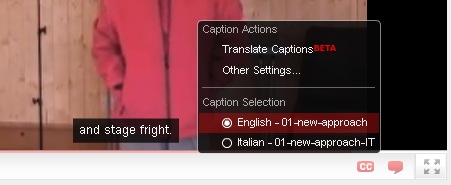
Titles of the videos, choose the one you want to watch first:
3. The right arm movement, 1: the lower half
4. The right arm movement, 2: the upper half
10. "What I learned from the Hungarian gypsies"
1. The rhythmic pulse
How to prevent and eliminate physical problems and stage fright, the importance of the rhythmic pulse in any music, the importance of imagination, how to learn to play from the very core of your being, not from the fingers. The first, simple exercise to achieve this.
2. Suspended arms
The importance of having light arms, suspended arms, with horizontal movement, how to achieve it. With exercises: the winging, flip flop, the "no violin-hold".
3. The right arm movement, 1: the lower half
The right arm movement, in the lower half of the bow, Allegro quavers. Where the arm movement originates, the two "hinges" in the right arm, the "no bow-hold". The connection between the touch, the eyes and the voice. What stiff wrists cause, how to prevent this.
4. The right arm movement, 2: the upper half
The right arm movement, in the upper half of the bow, Andante quavers. Where the arm movement originates, the two "hinges" in the right arm. Teach your body what to do, focus. What is the cause of problems with the elbow, the connection between wrist and elbow.
5. The left hand action
The simplicity of the New approach, the left hand movement, the interval shapes, there are only three intervals in your hand. The importance of a soft hand, you play with the whole hand, not with the fingers.
6. The bridal, a folk tune
A lovely English jig: sing and clap, to get the feeling, then play. This applies to all playing, at any level. Here is a violin player who eliminated stage fright with the New Approach and now enjoys playing for an audience.
7. The trembling bow
The
reason for the trembling bow, a very common and feared problem, how to
prevent it, eliminate it; the
importance of the thumbs, what stiff thumbs cause.
8. The thumbs - Telemann
The importance of the thumbs in string playing, what stiff thumbs cause. Use imagination to create. A real example applied to Telemann's viola concerto.
9. Sing the note names
The
importance of singing the note names, the left hand power,
the drama of the intervals. A real example applied to Telemann's viola
concerto.
This aspect of the New Approach often
tends to go a bit
undervalued, people tend to feel "silly" about singing, think is not
related to playing, Yet, as I myself could
experience, this is THE MOST IMPORTANT
aspect, because through singing, before
and while playing, we coordinate all separate
parts (left
hand and right arm movement, rhythmic pulse, melody) in a whole, so the
mind is totally focused on one thing: music. It's impossible to think
two things at the same time and, while you sing, your mind is
totally busy with
something and cannot possibly think any scary thoughts, it cannot worry
about being good or not and what they will think of you. Your mind is
full of music which comes out from the whole of you through
singing.
10. "What I learned from the Hungarian gypsies"
Here
is what Kato Havas says she learned from the Hungarian gypsies
about music and violin playing. I
think this final video is very appropriate as a conclusion, it really
explains the
purpose of music and playing, the New Approach is not just about doing
the right movements and playing all the right notes. I wish you to
enjoy your playing much more and that also your listeners
enjoy your music much more.
Buy Kato Havas teaching DVD (not the above videos) on the prevention and cure of tendonitis and other physical injuries caused by violin and viola playing.
For lessons, contact me, I'm based in Oxford (UK). Also online viola and violin lessons are available.
Description of the books: A New Approach - The twelve
lesson course - Stage fright - Causes and cures
Buy the teaching video on DVD
Go to Violin and viola books
Go
from Kato Havas
to Violin and viola
teacher
Read about other players' experiences with the
Havas New Approach
What's Your greatest New Approach success? Share your story!
Did you eliminate pain or tendonitis that prevented you from playing? Did you overcome stage fright? Do you find playing easier, more enjoyable? If you are a teacher, what's the best improvement you had with your students who learn to play with the new approach? I'd like to hear it, tell everybody!
Read other visitors' New Approach stories
Click on the links below to see how others learned to play and benefited from the New Approach. All stories by other visitors to this page...
I love it! 




I love Monica's viola playing. The instrument has a beautiful and mellow tone which works so well when played solo.
I had violin lessons with her learning …
Click here to write your own story
Fai clic qui per scrivere la tua storia
Read more comments about online violin and viola lessons
For more information and for lessons:
call Monica Cuneo, mob. (+44) 7985 025129 or skype: monicacuneo or send a message


and get FREE the famous
Rules for a Musical Life
of a great composer!


Articles about Kato Havas
Recommended readings
Some comments about my viola and violin teaching from my pupils
Recommended readings to eliminate physical injuries and stage fright
Click on them to read each book's description
I translated them into Italian, you can see them here
Stage fright
Its causes and cures
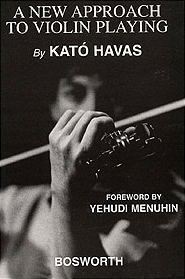
A New Approach
to violin playing
Do you want a workshop on the Havas New Approach?
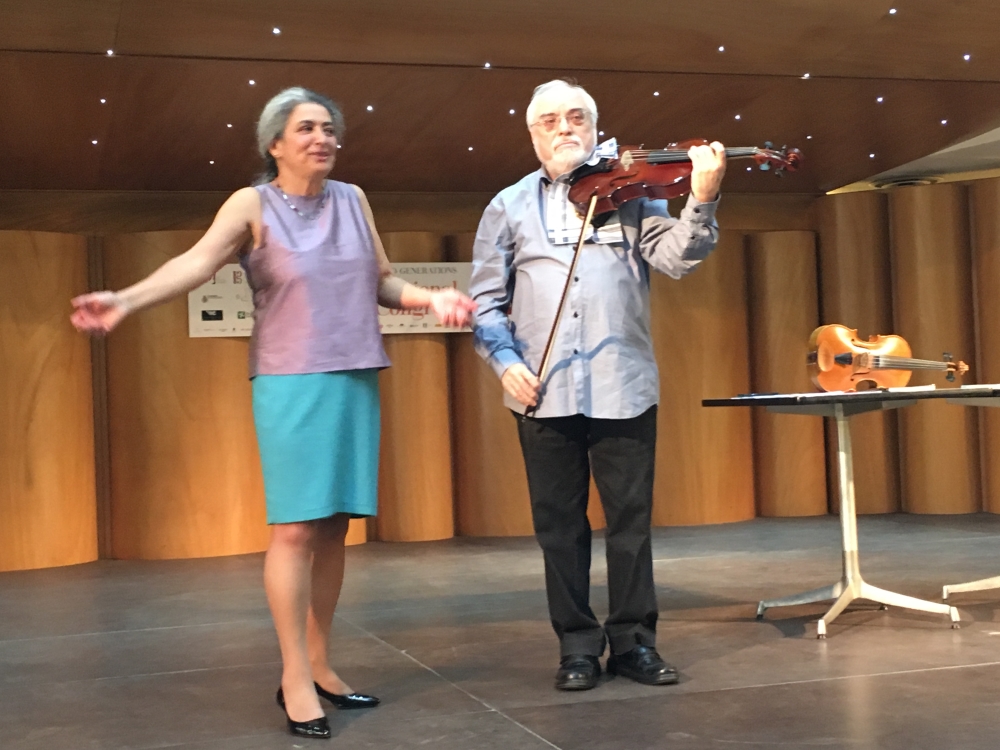
Workshop at the 43rd International Viola Congress, in Cremona
Havas New Approach
Teaching DVD
on the causes and cures of physical injuries in violin and viola playing
With detailed exercises on the release of tension and performance anxiety
